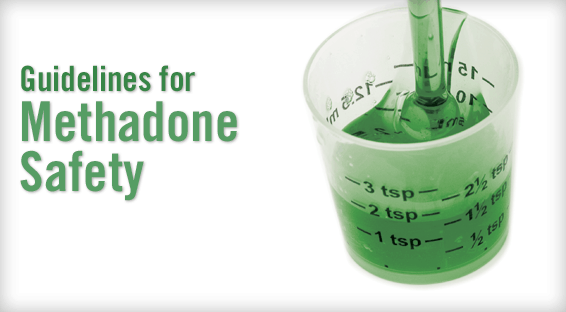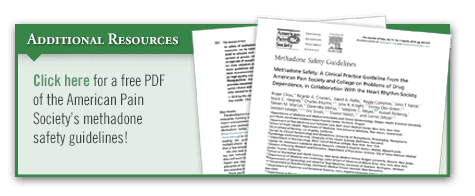Methadone is used for the treatment of opioid addiction and for chronic pain, but safety of the drug has recently been called into question. “Methadone is increasingly being prescribed for pain even though it was previously used almost exclusively for the treatment of addiction,” explains Roger Chou, MD. “Recent data indicate that accidental overdoses associated with the use of prescription methadone have increased substantially. Methadone accounts for around 5% of opioid prescribing but about 30% of accidental overdose deaths.”
Comprehensive Recommendations on Methadone Safety
Recently, the American Pain Society (APS) released its first methadone safety guideline in partnership with the College on Problems of Drug Depen-dency and in collaboration with the Heart Rhythm Society. “Guidelines on methadone safety have been published by other groups, but these have focused on cardiac arrhythmias, which account for a small minority of deaths relating to use of the drug,” says Dr. Chou, who was lead author of the APS methadone safety guideline. “In addition, other guidelines have not used a formal process for grading evidence and recommendations.”
The APS expert panel reviewed more than 3,700 scientific abstracts on various topics relating to methadone safety to prepare its guideline, which was published in the Journal of Pain. “All clinicians who prescribe methadone should use the guideline because it gives general recommendations as well as more specific advice,” Dr. Chou says (Table). “This includes information about starting doses and how to increase them. It also provides guidance on when to perform baseline ECGs and repeat them.” Recommendations were rated as strong or weak; a strong recommendation was indicated if potential benefits outweighed harms or burdens or if potential harms clearly outweighed benefits.
Assess Risk, Counsel Patients
One of the most important recommendations in the APS guidelines regards assessing risk in patients before they start methadone. Careful patient selection is essential and should be based on a thorough history, a review of medical records, and a physical examination. Results of these assessments can help stratify patients based on their risk for substance abuse. They can also help clinicians consider the potential for methadone causing reactions with other prescription drugs and possible arrhythmias. The guidelines recommend that clinicians counsel and educate patients and their caregivers about potential risks and benefits of methadone therapy and understand what to do should they see signs of respiratory depression or somnolence.
Methadone Accumulation: Treat With Caution
Dr. Chou also says that it is imperative to recognize the need to initiate and titrate methadone cautiously. “The half-life for methadone is about 30 hours but ranges from 15 to 60 hours, whereas the half-life for other opioids is about 2 hours,” he says. “This means that methadone levels can accumulate if doses are too high or if they’re increased too soon. The levels will continue to go up until they reach a steady state, which can take a week or longer. When methadone levels rise too high, it can result in respiratory depression that can be fatal.”
Methadone can also prolong QTc intervals, which Dr. Chou says predisposes patients to torsades de pointes, a potentially fatal ventricular arrhythmia. “The guidelines recommend that improved ECG monitoring can help identify patients at high risk for methadone-induced arrhythmias and promote safer use of methadone,” he says. “Ideally, recommendations from the guidelines could be linked to electronic medical records so that clinicians are prompted on when to perform ECGs and when doses are increased too rapidly.”
Research Gaps Remain in Safe Methadone Use
The guideline writing group concluded that measures can be taken to promote safer use of methadone. “To safely prescribe methadone, healthcare providers need the clinical skill and knowledge to mitigate risks relating to overdoses and cardiac arrhythmias,” says Dr. Chou. “Unfortunately, we still have numerous research gaps remaining.” He notes that most of the recommendations were based on low-quality evidence and none were based on high-quality evidence.
According to Dr. Chou, research is needed to better determine how frequently ECGs should be obtained and if they should be performed in all patients who are prescribed methadone or if they should be targeted to higher-risk individuals. “We also need a better understanding of the optimal ways to initiate and titrate methadone,” he says. “Interestingly, a recent Veterans Affairs study showed that methadone was associated with a lower risk of death than morphine. This suggests that, in some settings, it’s possible to prescribe methadone in a way that reduces risk. However, we need more research to understand the factors that contribute to safer methadone prescribing in different settings.”



